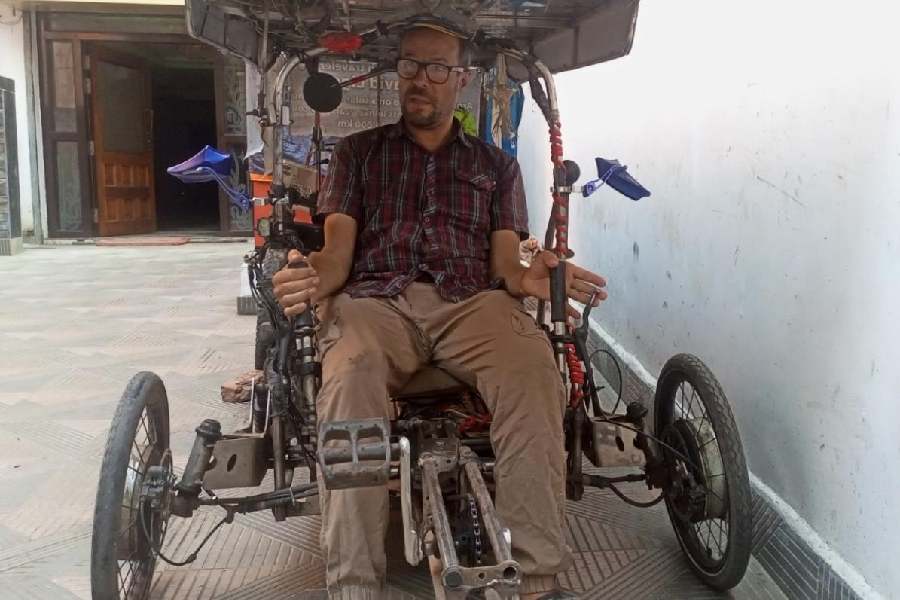A new study published in Kolkata on September 19 has busted the belief that West Bengal does not have enough solar energy potential when compared to western and southern states of the country.
It has further pointed out that the state has more than 19,000 mega watt (MW) of ground mounted solar potential, three times of what the Union ministry of new and renewable energy (MNRE) had earlier calculated.
The potential increases further if the floating solar-, wind power- and biomass-based power are added up, shows the study carried out by i-FOREST, a leading environment research organisation in India.
The study report, West Bengal Renewable Energy Potential RE-Assessment, with focus on solar, wind and biomass, also pointed out that there has been enough wasteland available in the state for significant installation of solar power, countering the land availability myth linked to the solar set-up in the state. An estimated 2,280MW of solar energy can be generated using 46.13sqkm of usable waste land available.
MLA and head of Kolkata Municipal Corporation’s climate and solar committee Debasish Kumar, DVC chairman Suresh Kumar, solar energy expert S.P. Gon Choudhury, several industry representatives, academicians and environmental students from several institutes of Kolkata and non-profits attended the stakeholder dialogue, ‘Enabling renewable energy growth in West Bengal’ organised by i-FOREST, alongside city-based non-profit Environment Governed Integrated Organisation (EnGIO), which was hosted at the Bengal Chamber of Commerce & Industry (BCCI).
“Our research, based on latest datasets and updated methodologies, shows that West Bengal’s renewable energy potential is three to four times higher than those previously assessed by the ministry of new and renewable energy agencies. This tagging of low renewable energy state to West Bengal is a misnomer as its potential is better than Germany considered as the frontline European country in solar power,” said Chandra Bhushan, chief executive officer of i FOREST, at the meeting; adding that the state can easily meet its current and future renewable energy needs and promote green growth and jobs of it pursues appropriate policy.
Debasish Kumar, member of the West Bengal Legislative Assembly and the head of climate and solar committee of Kolkata Municipal Corporation, listed the number of renewable energy projects already operating and in the pipeline for both the state and Kolkata. But he accepted that the state needs “a strong policy to implement the solar agenda for giving it a structured approach”.
“Renewable energy demand should be created by making it a people’s movement (and) a strong state policy is crucial for achieving it,” said S. Suresh Kumar, chairman of Damodar Valley Corporation and a former power secretary in the state government.


“We will soon prepare a white paper on the way forward of renewable energy in the state, particularly solar, based on that report and follow-up consultation; and submit it to the minister and secretary of non-conventional and renewable energy” said a senior EnGIO representative.
West Bengal lagging, rooftop solar is the key
“At present, West Bengal’s renewable energy (RE) sector is lagging compared to other states. The east Indian state accounts for only 0.4 per cent of the national RE capacity. In the last five years, while the national RE capacity has increased by 64,232MW, the capacity addition in West Bengal was only 132MW. However, i FOREST’s assessment shows that West Bengal has very high RE potential,” reads the report. West Bengal is incidentally considered the pioneer state in installation of solar power with massive off-grid solar in the Sunderbans and even the first solar plant in the country at Disergarh.
The report points out that “potential for solar ground-mounted is over 19,000MW, three times the MNRE estimated potential …about 56 per cent of the potential is in Purulia district”. It also states that “across the 30 major dams in the state, the floating solar PV potential is estimated to be 3,567 MW (with) Kangsabati dam provides the largest individual potential of 1,790 MW”.
“For wind power projects, a theoretical potential of close to 20,000 MW is identified at a hub height of 100 m above ground level (while) biomass potential is estimated at 2,864 MW, double the MNRE assessment” states report with Paschim Medinipur, South 24-Parganas and Purba Bardhaman districts account for half of the assessed potential.
A panel discussion including representatives from leading industries, government departments and independent experts highlight that lack of renewable policy is hurting the renewable energy, especially solar, prospect in the state.
“The state does not have a renewable energy policy, and in its absence, gets hampered to translate its immense potential, especially in sectors like rooftop solar,” pointed out S.P. Gon Choudhury, the solar expert and governing body member of West Bengal Renewable Energy Development Agency, a state government unit.



